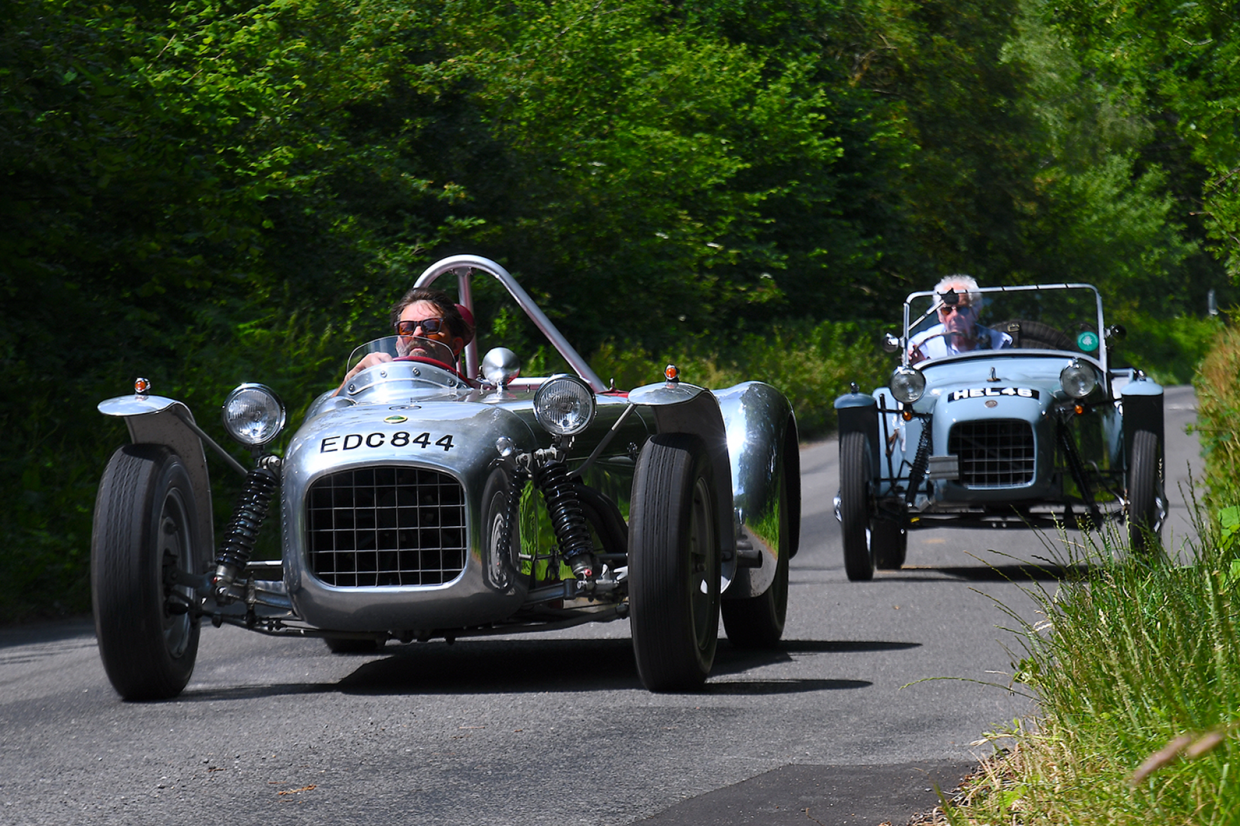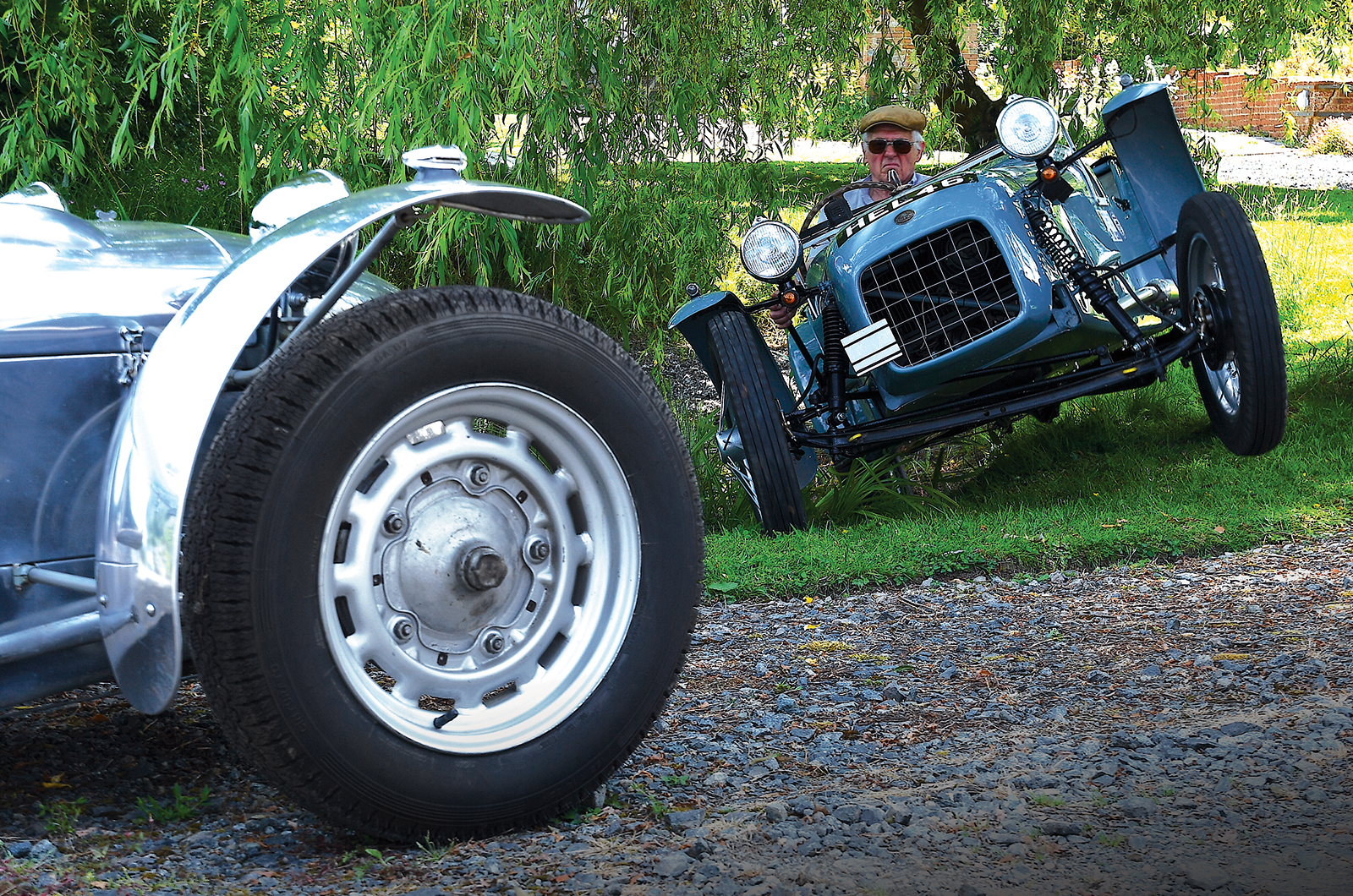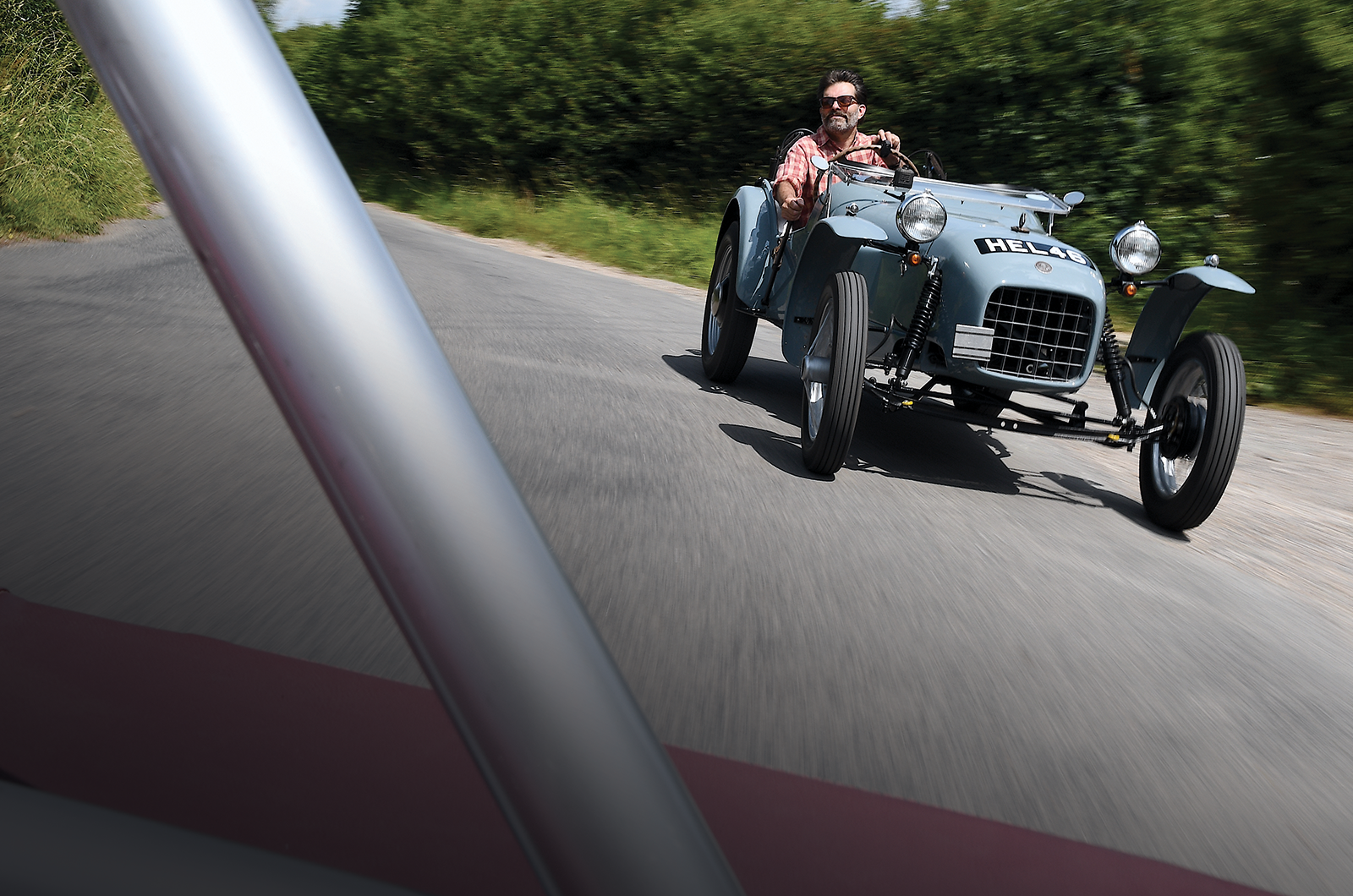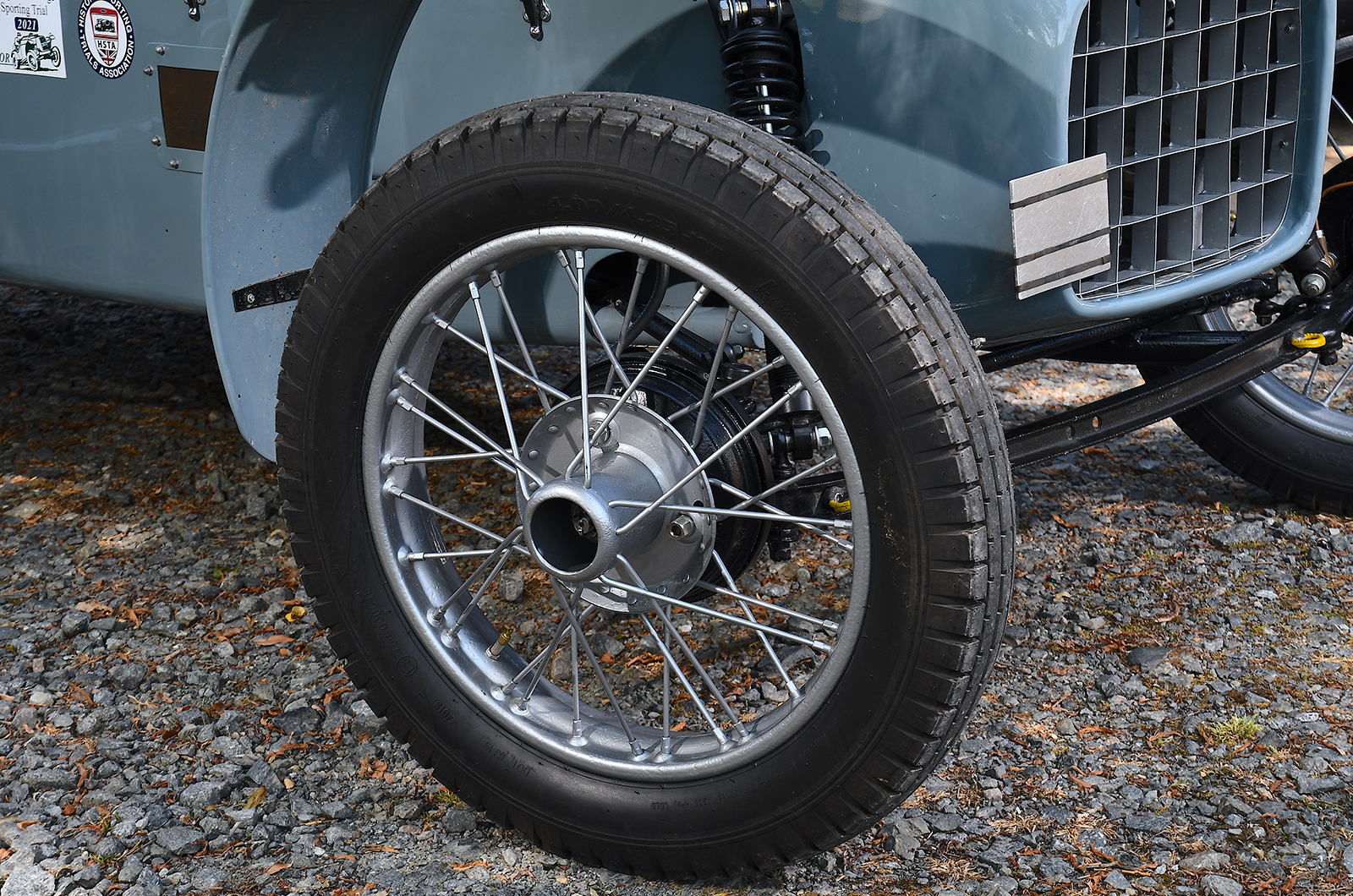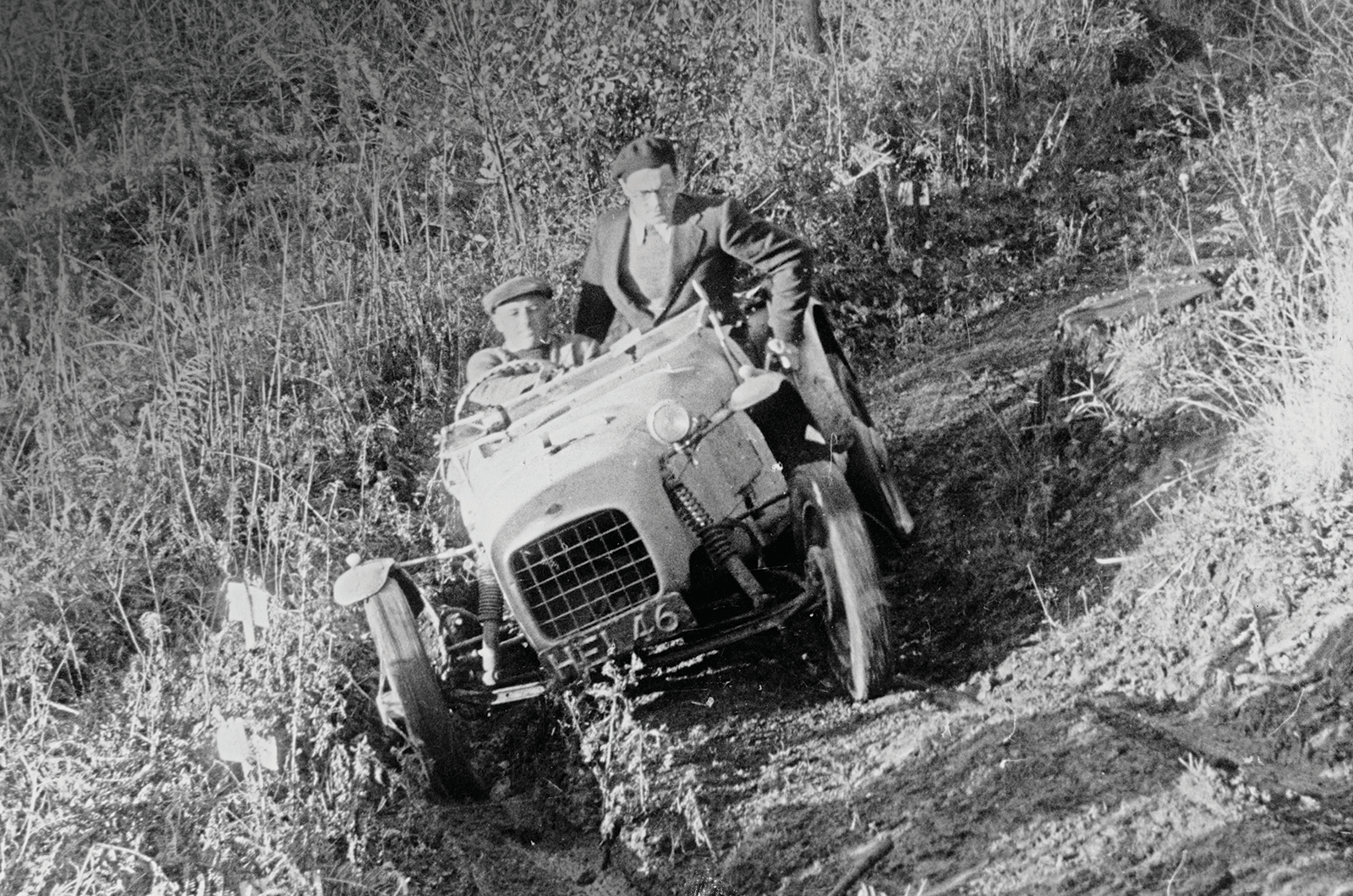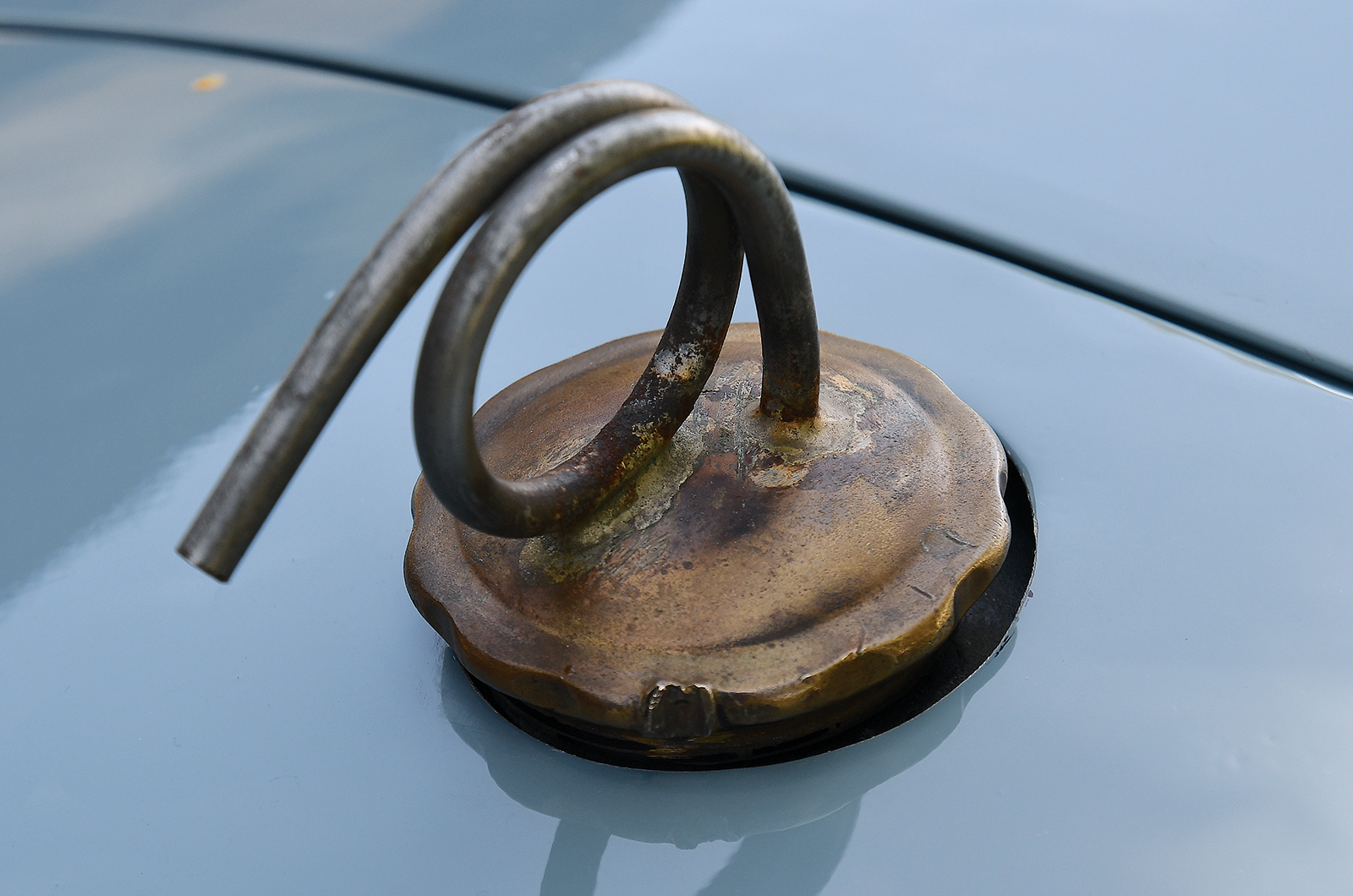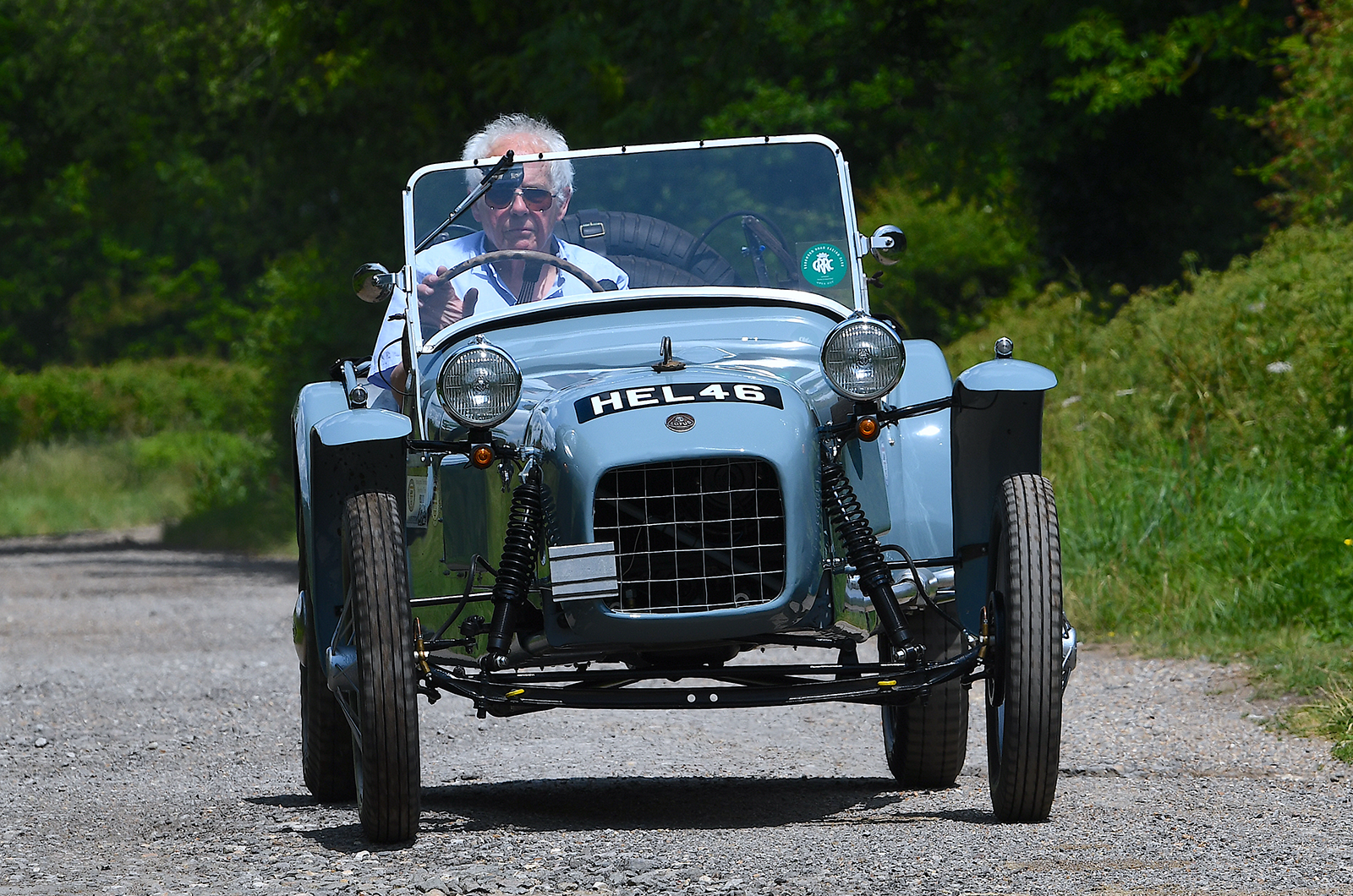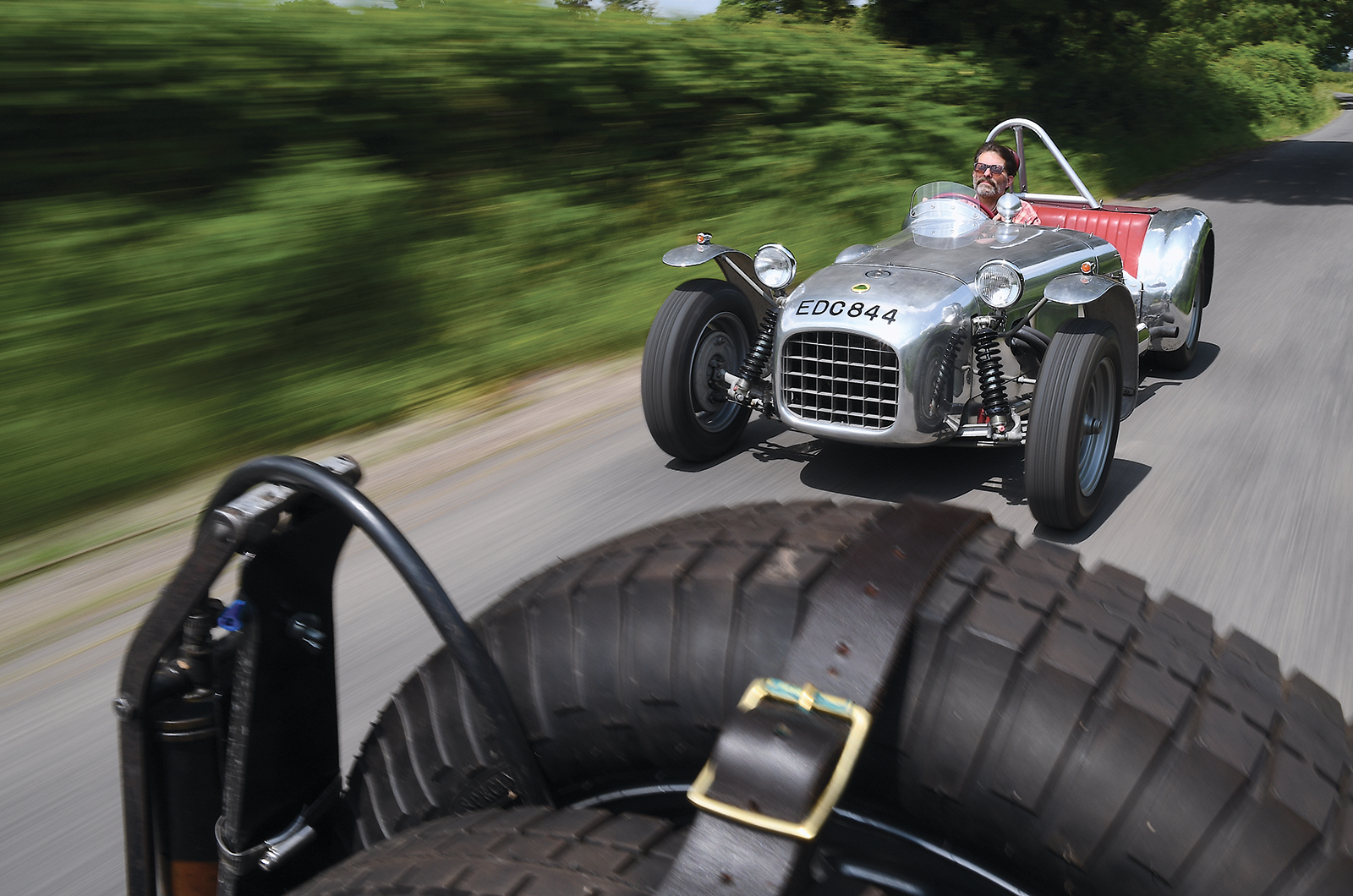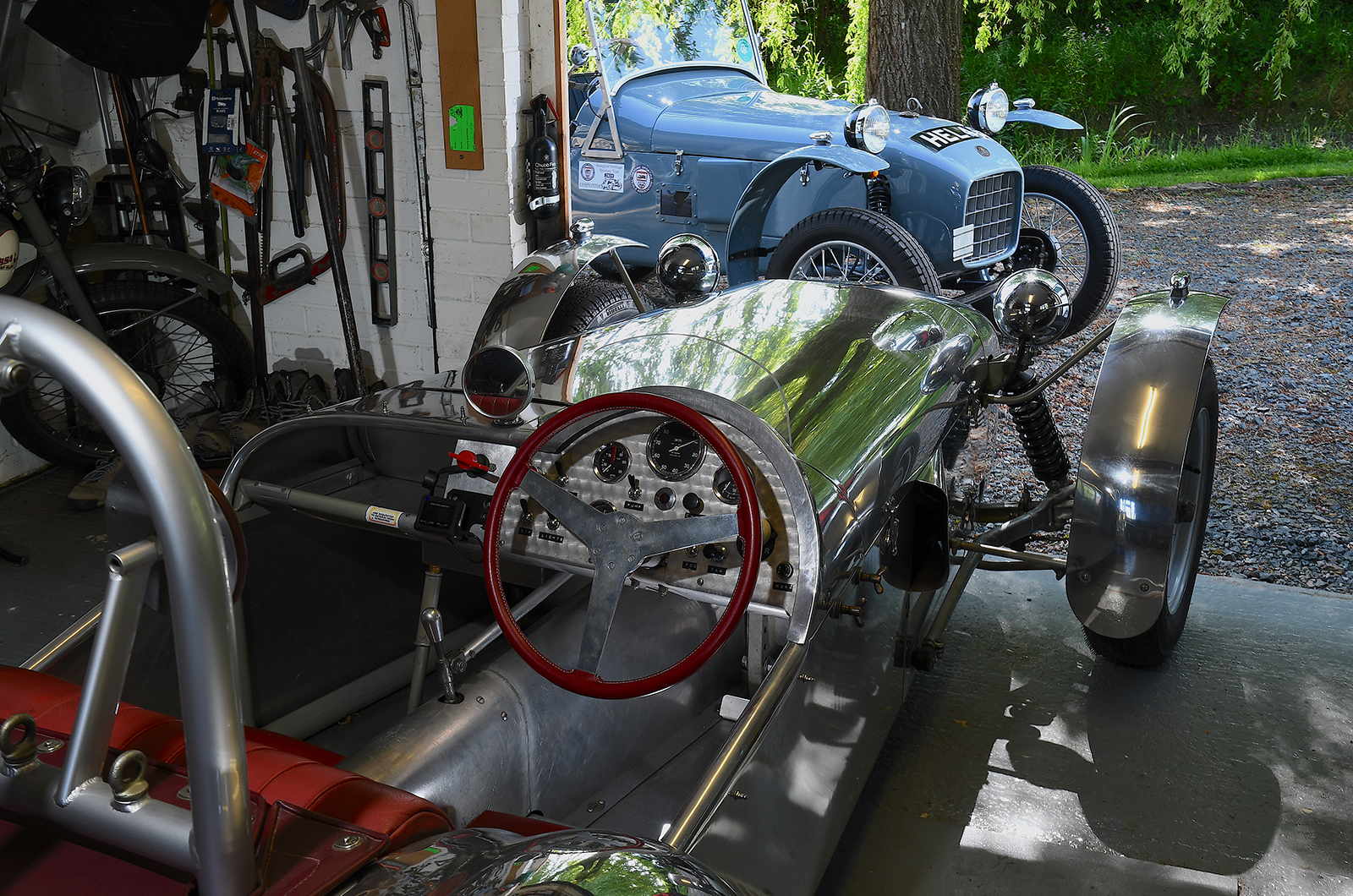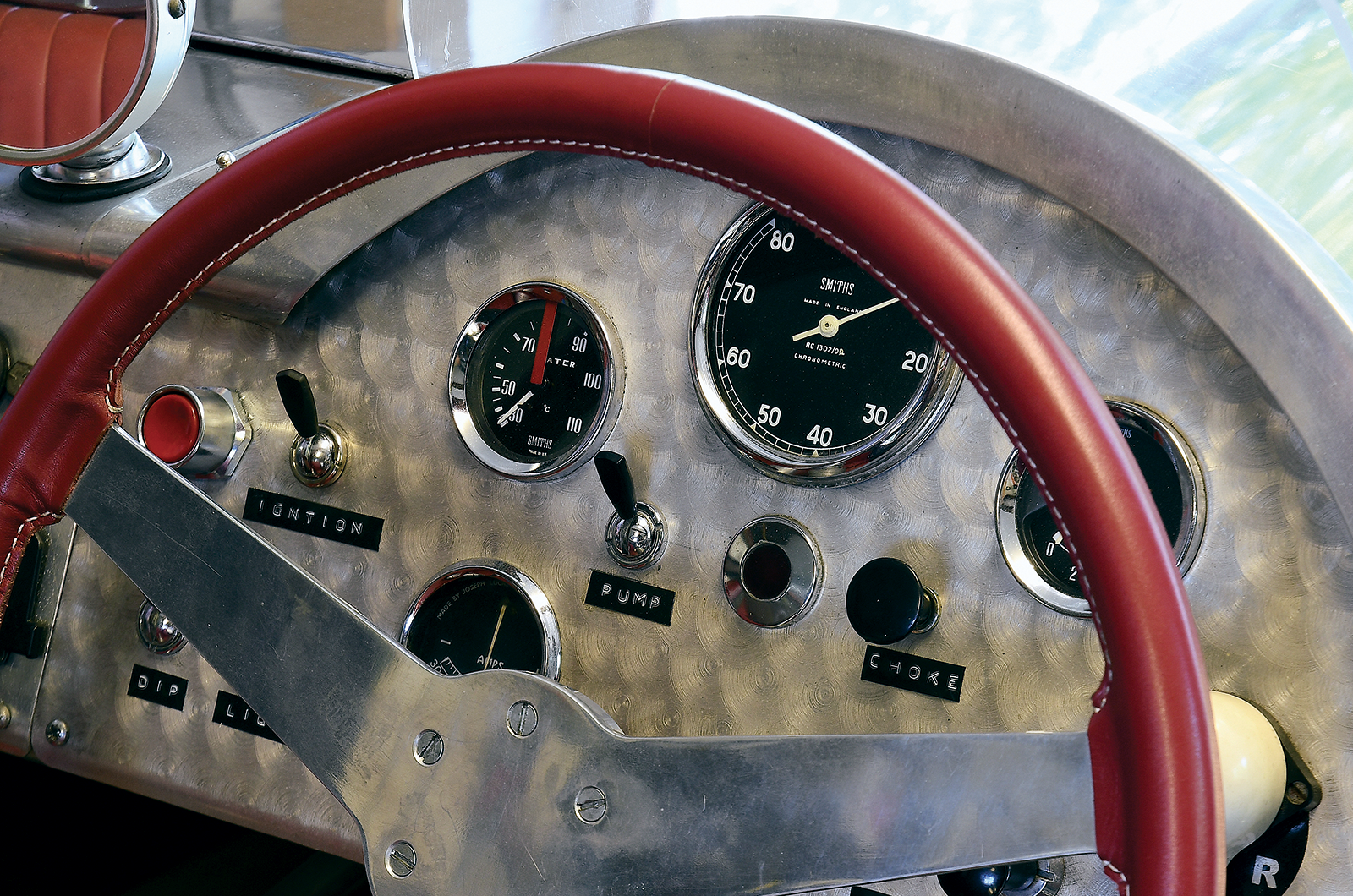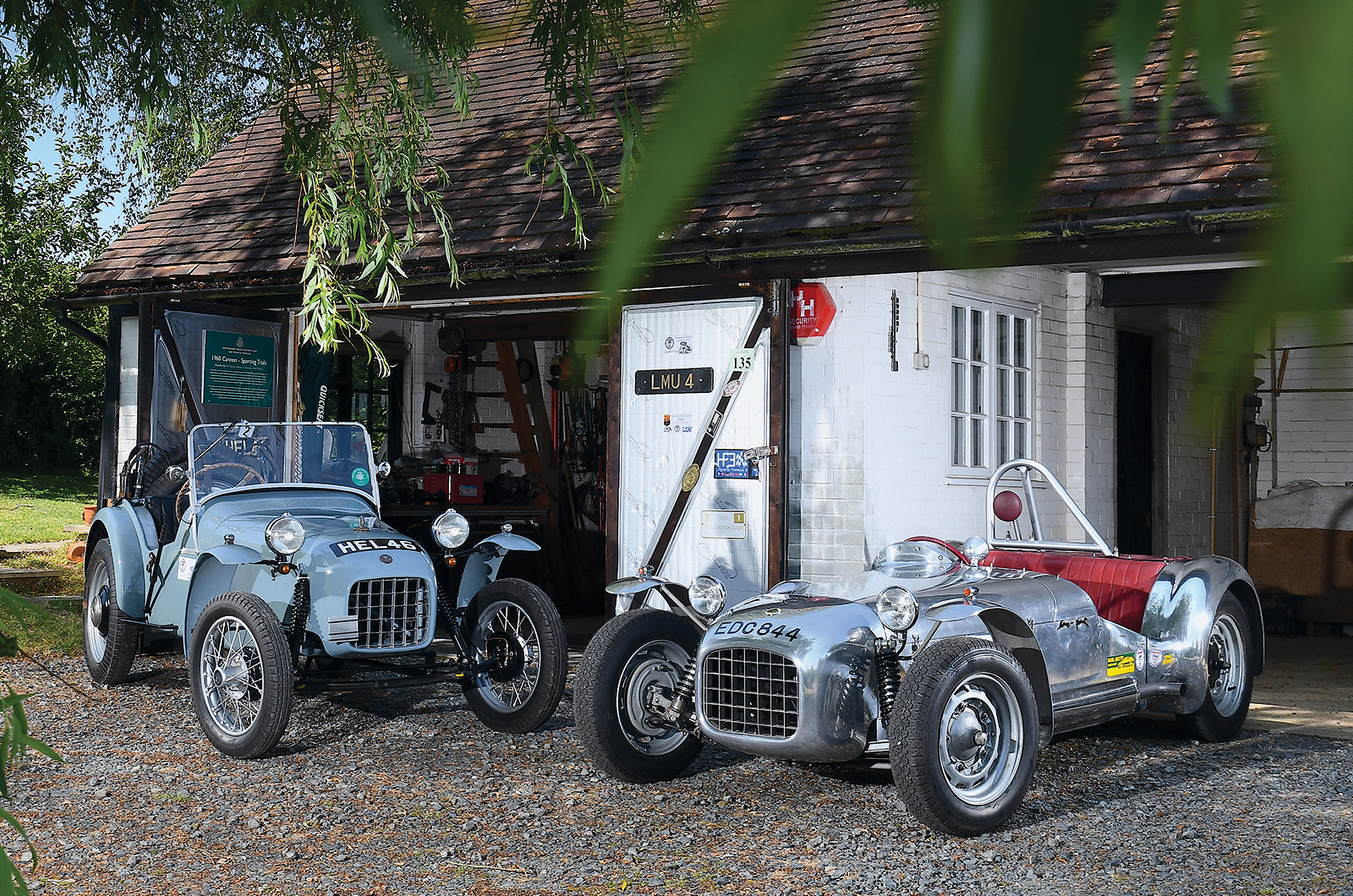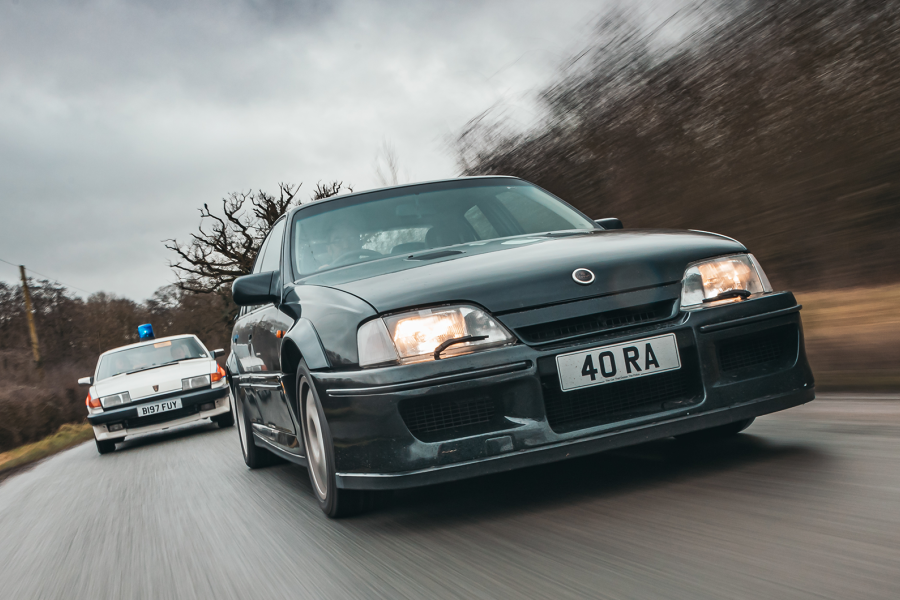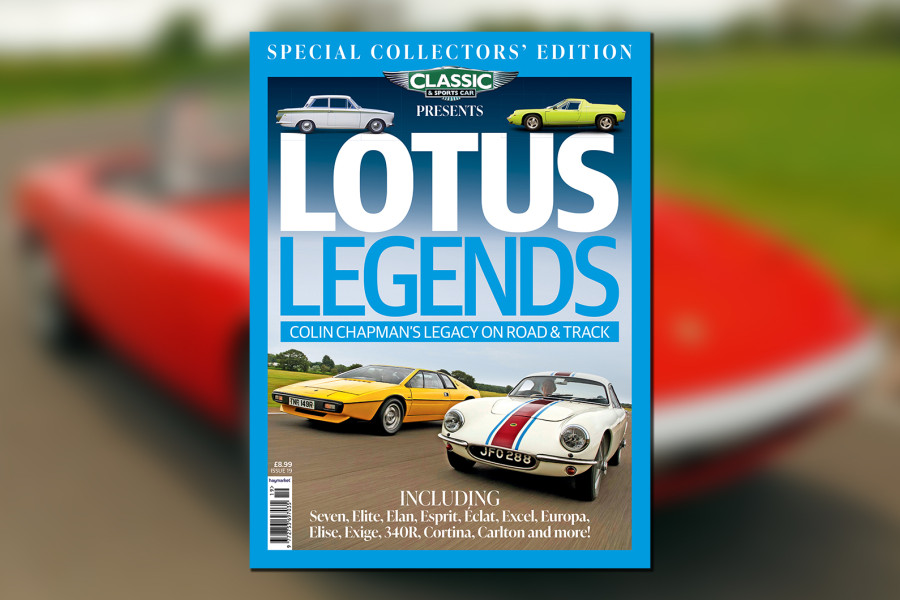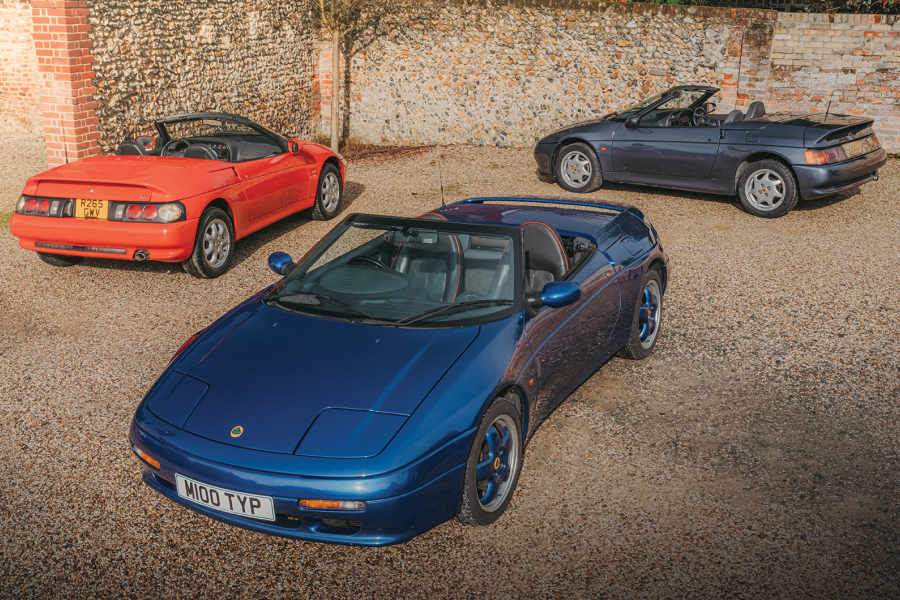Double-declutching helps (in this respect the trials car is much better), although downchanges can still be crunchy.
The large, standard Ford brakes have good bite and it’s easy to squeal the front Pirelli Cinturatos (especially when the trials car stops dead in front of you), though they’re grabby because the drums aren’t quite in perfect shape – one of the items on the short snagging list before it competes.
It looks every inch the 1950s racer in its polished finish, and Martyn runs it without the usual Six spats purely for preference.
The Lotus Six road car features an engine-turned dashboard and Smiths dials
This one has a chassis number – 60, first registered in 1955 – and it transpires that it was owned by John Whitmore in 1957 and ’58.
Contemporary results in a late-1958 issue of Motor Racing report of finishes at Brands Hatch, Oulton Park, Silverstone (twice, with a best result of second in a handicap race, when it was already being described as a Lotus-Elva), and at the Goodwood Members’ Meeting, after which Whitmore sold it that November.
He went on to become British Saloon Car Champion in 1961, in a Mini, and 1965 European Touring Car Champion with a Lotus Cortina.
‘Given the fairly high state of tune it’s surprisingly tractable, but you can feel it trying to climb up on the cam at 3500rpm’
By 1969 it was in Scotland, and in 1992 the car was in the hands of Don Shead, who had the frame and body restored by FJ Fairman of Bodmin, Cornwall.
Except the car wasn’t completed until 2000: then-owner Stewart Couch had the engine, with its rare Elva overhead inlet-valve head, rebuilt by Paul Fox.
With FIA papers, it raced with the Historic Sports Car Club in 2001.
Then, in 2002, it was sold into Belgium, used in the Paul Matty Hillclimb Championship between 2003-2020, before crossing the water again to Sweden.
Lotus’ first commercial success covers all bases
It fetched up at a Silverstone Auctions sale in 2021, after which it was also sent to Nemesis Racing for an engine rebuild – where Martyn saw and bought it: “I’d always wanted a Six that I could speed hillclimb and race.
“I’d just sold my historic F3 Chevron when this came up – it’s just a nice, original car with a bit of history.”
It’s testament to the versatility of Chapman’s design that his basic idea could dominate two very different branches of motorsport, and display such different characters, yet came out of the same stables in north London seven decades ago.
Perhaps the most ringing endorsement of the Six is that his lightweight spaceframe concept is still with us today in the Caterham Seven and its imitators.
Images: John Bradshaw
READ MORE
Lotus Six: flyweight flyer
Caterham Seven: 50 years of lightweight thrills
The specialist: Lotusbits
Paul Hardiman
Paul Hardiman is a regular contributor to – and former Deputy Editor of – Classic & Sports Car
